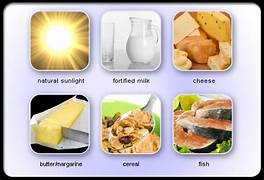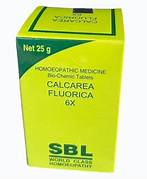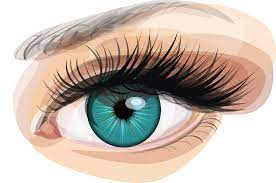What is Vitamin D?
Vitamin D is a fat-soluble secosteroid hormone that plays a crucial role in calcium homeostasis, bone health, immune regulation, cell growth, and inflammation control. Unlike other vitamins, the body can synthesize vitamin D endogenously when the skin is exposed to sunlight.
There are two main forms of vitamin D relevant to humans:
1. Vitamin D2 (Ergocalciferol)
- Source: Plant-based and fungal origin.
- Found in UV-exposed mushrooms, fortified foods, and some supplements.
- Less potent and shorter half-life than D3.
- Common in prescription supplements (e.g., Drisdol).
2. Vitamin D3 (Cholecalciferol)
- Source: Animal-based.
- Produced in the skin upon UVB radiation (290–315 nm) exposure.
- Found in fatty fish (salmon, mackerel), egg yolks, cod liver oil, fortified dairy.
- More effective at raising and maintaining serum 25(OH)D levels than D2
Vitamin D must undergo two hydroxylations to become biologically active:
1.First (Liver):
-
- D2 or D3 → 25-hydroxyvitamin D [25(OH)D]
- Also called calcidiol – this is the primary circulating form used to assess vitamin D status.
- Second (Kidneys):
- 25(OH)D → 1,25-dihydroxyvitamin D [1,25(OH)2D]
- Also called calcitriol – the biologically active hormone.
Direct (Natural) Sources:
Fortified Foods:
- Fortified milk (cow, soy, almond): 100–130 IU/cup
- Fortified orange juice: 100 IU/cup
- Fortified cereals: 40–100 IU/serving
- Fortified yogurt: 80 IU/serving
- UVB rays convert 7-dehydrocholesterol in the skin to pre-vitamin D3, which isomerizes to vitamin D3.
- Factors affecting synthesis:
- Latitude, season, time of day
- Skin pigmentation (darker skin requires longer exposure)
- Age (older adults synthesize less)
- Sunscreen use (SPF 30+ reduces synthesis by ~95%)
- Clothing and pollution
Calcium & Phosphate Absorption: Enhances intestinal uptake.
- Bone Health: Prevents rickets (children) and osteomalacia/osteoporosis (adults).
- Parathyroid Hormone (PTH) Regulation: Prevents secondary hyperparathyroidism.
- Immune Modulation:
- Reduces pro-inflammatory cytokines (e.g., TNF-α, IL-6).
- Enhances antimicrobial peptide (cathelicidin) production.
- Linked to reduced risk of autoimmune diseases (MS, T1D, RA).
- Cardiovascular Health:
- May reduce hypertension, inflammation, and endothelial dysfunction.
- Low D linked to higher CVD risk (but causality not proven).
- Cancer Prevention:
- Inhibits cell proliferation, promotes apoptosis.
- Observational studies link low D to higher risk of colorectal, breast, prostate cancers.
- VITAL Trial: No significant reduction in overall cancer incidence with supplementation, but 20% lower cancer mortality observed.
- Mental Health:
- Receptors in the brain; linked to mood regulation.
- Low D associated with depression, seasonal affective disorder (SAD).
- Muscle Function:
- Deficiency causes proximal muscle weakness.
- Supplementation improves strength and reduces fall risk in elderly.
Causes:
- Limited sun exposure (indoor lifestyle, northern latitudes)
- Dark skin pigmentation
- Aging (reduced skin synthesis)
- Obesity (vitamin D sequestered in fat)
- Malabsorption (celiac, Crohn’s, bariatric surgery)
- Liver/kidney disease (impaired hydroxylation)
Symptoms & Risks:
- Bone pain, muscle weakness
- Rickets, osteomalacia
- Increased fractures, falls
- Immune dysfunction (higher infection risk)
- Possible links to autoimmune diseases, diabetes, depression
Vitamin D and Immune Resilience (Including Viral Infections)
- COVID-19 Research:
- Multiple studies show low 25(OH)D levels correlate with higher risk of severe COVID-19, hospitalization, and death.
- Mechanism: D enhances innate immunity, reduces cytokine storm.
- RCTs mixed: Some show benefit in reducing ICU admission (e.g., Cordoba study), others (like CORONAVIT) show no major impact.
- Consensus: Vitamin D won’t prevent infection, but may modulate severity in deficient individual
Extra-Renal Activation of Vitamin D
- Beyond Kidneys: Immune cells, brain, skin, prostate, breast, and colon can locally convert 25(OH)D to 1,25(OH)2D.
- Suggests autocrine/paracrine roles in tissue-specific immune regulation and cancer prevention.
Personalized Vitamin D Supplementation
- Genetic variations (e.g., in CYP2R1, GC, VDR genes) affect vitamin D metabolism and response.
- Future may include genotype-guided dosing.
Vitamin D and Gut Microbiome
- Emerging evidence suggests vitamin D influences gut microbiota composition.
- Higher D levels linked to increased microbial diversity and beneficial taxa (e.g., Bacteroides).
- May mediate gut-immune axis effects.
Daily Supplementation
- Large intermittent doses (e.g., 50,000 IU monthly) may be less effective and potentially harmful.
- Daily or weekly low-dose regimens are preferred for stable levels.
Vitamin D and Longevity / All-Cause Mortality
- Meta-analyses show vitamin D3 supplementation reduces all-cause mortality, especially in older adults.
- Effect is most pronounced in deficient individuals.
- UL (Tolerable Upper Intake Level):
- Infants: 1,000–1,500 IU/day
- Children: 2,500–4,000 IU/day
- Adults: 4,000 IU/day (IOM), though some tolerate up to 10,000 IU/day short-term.
- Toxicity (Hypervitaminosis D):
- Rare, usually from excessive supplementation (>10,000 IU/day long-term).
- Causes hypercalcemia, leading to kidney stones, confusion, nausea, vascular calcification.
- Test: Serum 25-hydroxyvitamin D [25(OH)D] – gold standard.
- When to test: Suspected deficiency, malabsorption, osteoporosis, chronic illness.
- Frequency: Recheck 3–6 months after starting supplementation.
- Get regular sun exposure (when possible).
- Eat vitamin D-rich foods (fatty fish, eggs, mushrooms).
- Consider supplementation (D3 preferred, 800–2,000 IU/day).
- Test levels if at risk (dark skin, elderly, obese, limited sun).
- Avoid mega-doses without medical advice.
Vitamin D is far more than a “bone vitamin.” It is a pleiotropic hormone with wide-ranging effects on immunity, metabolism, mental health, and disease prevention. While sunlight and diet are natural sources, supplementation with D3 is often necessary to achieve optimal levels, especially in high-risk groups.
Emerging research emphasizes its role in immune defense, microbiome interaction, and personalized nutrition — making vitamin D one of the most studied nutrients of the 21st century.





